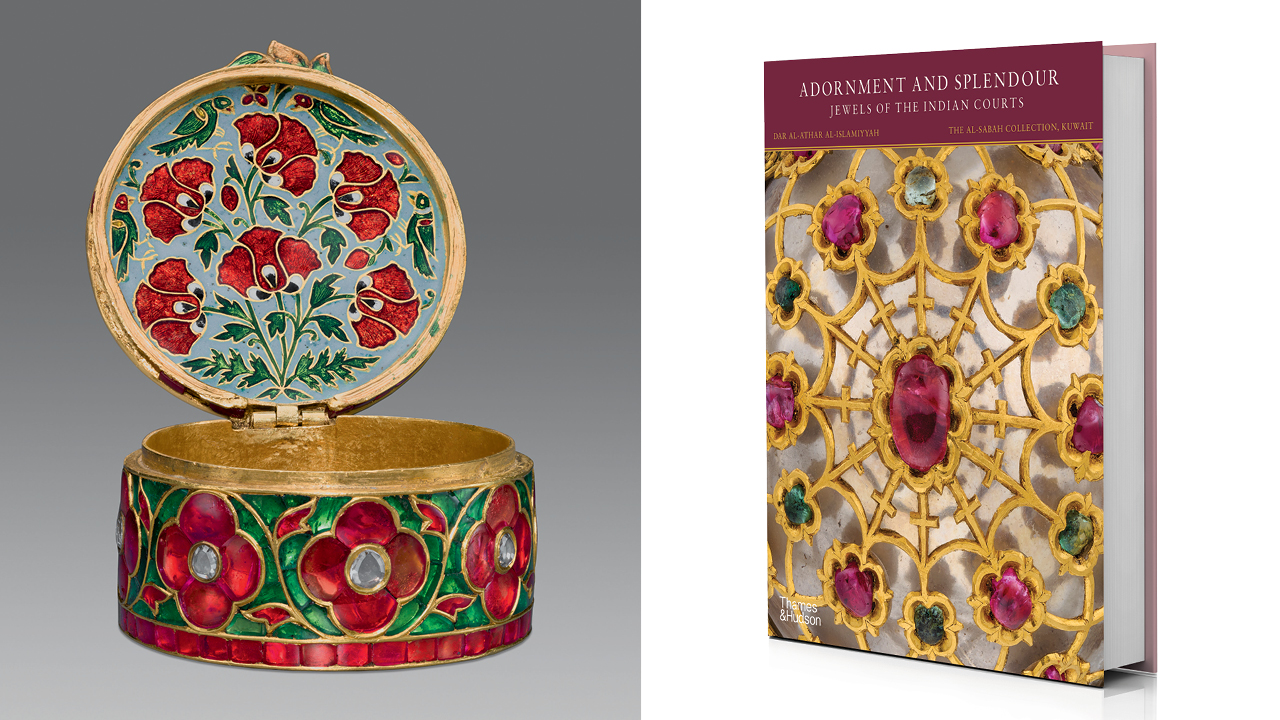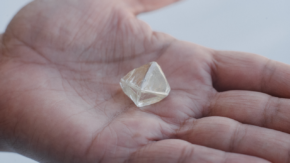The Mughal empire and Deccan sultanates of India boasted many beautiful jewels. An exquisite array of these jewels and luxury objects, dating from the 16th and 17th centuries, make up the al-Sabah Collection in Kuwait — and are now the subject of a lavish new book.
Adornment and Splendour: Jewels of the Indian Courts by curator and collection manager Salam Kaoukji showcases more than 300 items, some of them seeing publication for the first time. The book puts these treasures in their historical context with detailed commentary, while color photographs reveal the front and back, inside and exterior of each piece.
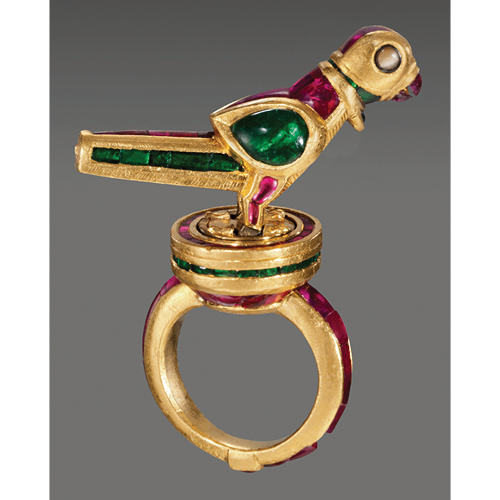
(The al-Sabah Collection)
Precious artistry
The rich legacy of the period comes through in everything from the intricately inscribed gems and dazzling jewelry to objects like cups, trays, bowls, bottles, and even inkwells and a fly-whisk handle. The Indian artisans’ craftsmanship elevates these items beyond the everyday, as do the jewels that decorate them.
Skillful enameling adorns the backs, undersides and interiors of many pieces. The artisans used materials such as nephrite jade, rock crystal, agate and hard stone to great artistic effect, setting them with precious metals and gems. The fine art of relief carving is on display in a selection of carved emeralds with nature-inspired themes.
The first item in the book sets the tone: an impressive 249.3-carat royal spinel inscribed with the names of six rulers. Other inscribed spinels and emeralds from the collection follow this standout gem, with close-ups showing the inscriptions in detail.
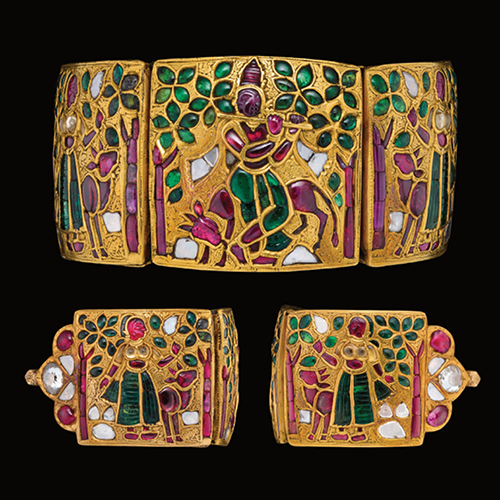
(The al-Sabah Collection)
Set in stone
The book’s overview highlights not only the history of the region, but also its jewelry resources and cultural influences. Local gem-cutting traditions concentrated on enhancing the natural beauty of each stone, retaining as much of its material as possible, according to the author. Meanwhile, channel-setting the stones was a way to create unbroken lines of color.
One distinctive Indian stone-setting technique was the kundan method of hyper-purifying gold and refining it until it became soft and malleable at room temperature, says Kaoukji. This let the jeweler shape it as desired and cut grooves to place stones in it without the need for soldering or claws, giving the artist greater creative freedom.
Another technique she cites is the talab setting, in which many small, fine-quality stones make up large fields of color. And the à jour method of setting large stones without backing lets in a maximum of light for a stained-glass effect.
The artistry of the region during the Mughal and sultanate periods yielded a “rich repertory of jewelry arts,” Kaoukji writes. Personal adornment reached new heights that transformed the human body “into a walking gem-bedecked sculpture.”
Adornment and Splendour: Jewels of the Indian Courts by Salam Kaoukji was published by Thames & Hudson in December 2023.
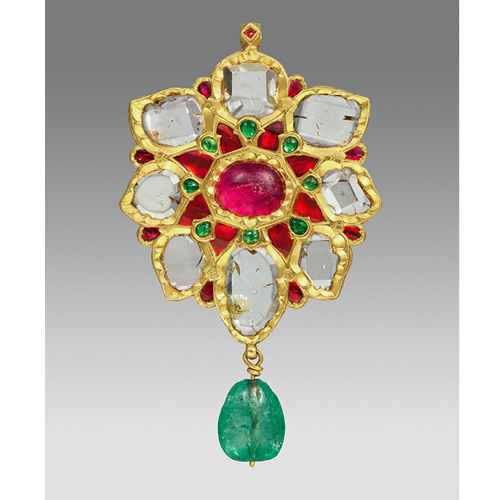
Main image: From left: Champlevé enameled box with rubies, emeralds and diamonds, either Deccan or Mughal; Adornment and Splendour: Jewels of the Indian Courts. (The al-Sabah Collection; Thames & Hudson)
This article is from the January-February 2024 issue of Rapaport Magazine. View other articles here.
Stay up to date by signing up for our diamond and jewelry industry news and analysis.
